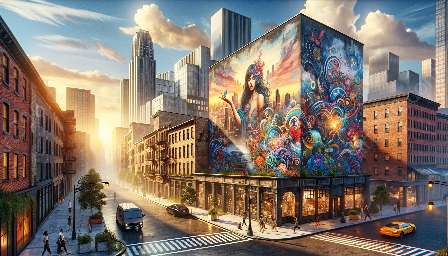Contemporary street art has become a powerful medium for conveying social and political messages, reflecting the complexities of our modern society. Street art, often an expression of cultural and political commentary, serves as a platform for artists to engage with and challenge prevailing social narratives. It offers an alternative means of communication, allowing marginalized voices to be heard and advocating for change.
The Evolution of Street Art
Street art has evolved from its roots as a form of rebellious expression to a legitimate art form, gaining recognition in mainstream culture for its capacity to provoke thought, incite emotion, and ignite social change. As a reflection of contemporary society, street art has become a dynamic part of urban landscapes, engaging with and responding to the prevailing social and political climate.
Expressing Social Injustice
One of the key ways contemporary street art reflects social messages is by offering a visual representation of social injustice. Artists use their work to shine a light on issues such as inequality, discrimination, and systemic oppression, sparking conversations and calls for social reform. Street art serves as a poignant reminder of the struggles faced by communities who are often marginalized or overlooked.
Political Commentary
Street art provides a platform for artists to engage in political commentary, expressing dissent, challenging authority, and critiquing the status quo. It serves as a visual forum for debates around governance, policy-making, and power dynamics. Through their art, street artists can question the ethical and moral implications of political decisions, encouraging citizens to critically reflect on their society.
Community Engagement
Contemporary street art fosters community engagement by transforming public spaces into forums for social discourse. These works of art encourage people to interact with their surroundings, promoting a sense of shared ownership and civic responsibility. By addressing social and political issues within the public domain, street art prompts individuals to reconsider their roles within society and advocate for collective action.
Inclusivity and Representation
Street art often serves as a platform for inclusivity and representation, giving voice to underrepresented groups and advocating for diversity. Artists use their work to challenge stereotypes, celebrate cultural heritage, and confront prejudices, promoting a more inclusive and equitable society. By offering alternative narratives and perspectives, street art plays a role in reshaping social consciousness and fostering empathy.
Conclusion
Contemporary street art serves as a canvas for social and political messages, providing a visual testament to the issues and struggles of our time. Its presence in public spaces challenges the boundaries of conventional art, making a profound impact on the way society engages with cultural and political discourse. By acknowledging and embracing the significance of street art, we can better understand the complex fabric of our society and envision a more equitable future.

